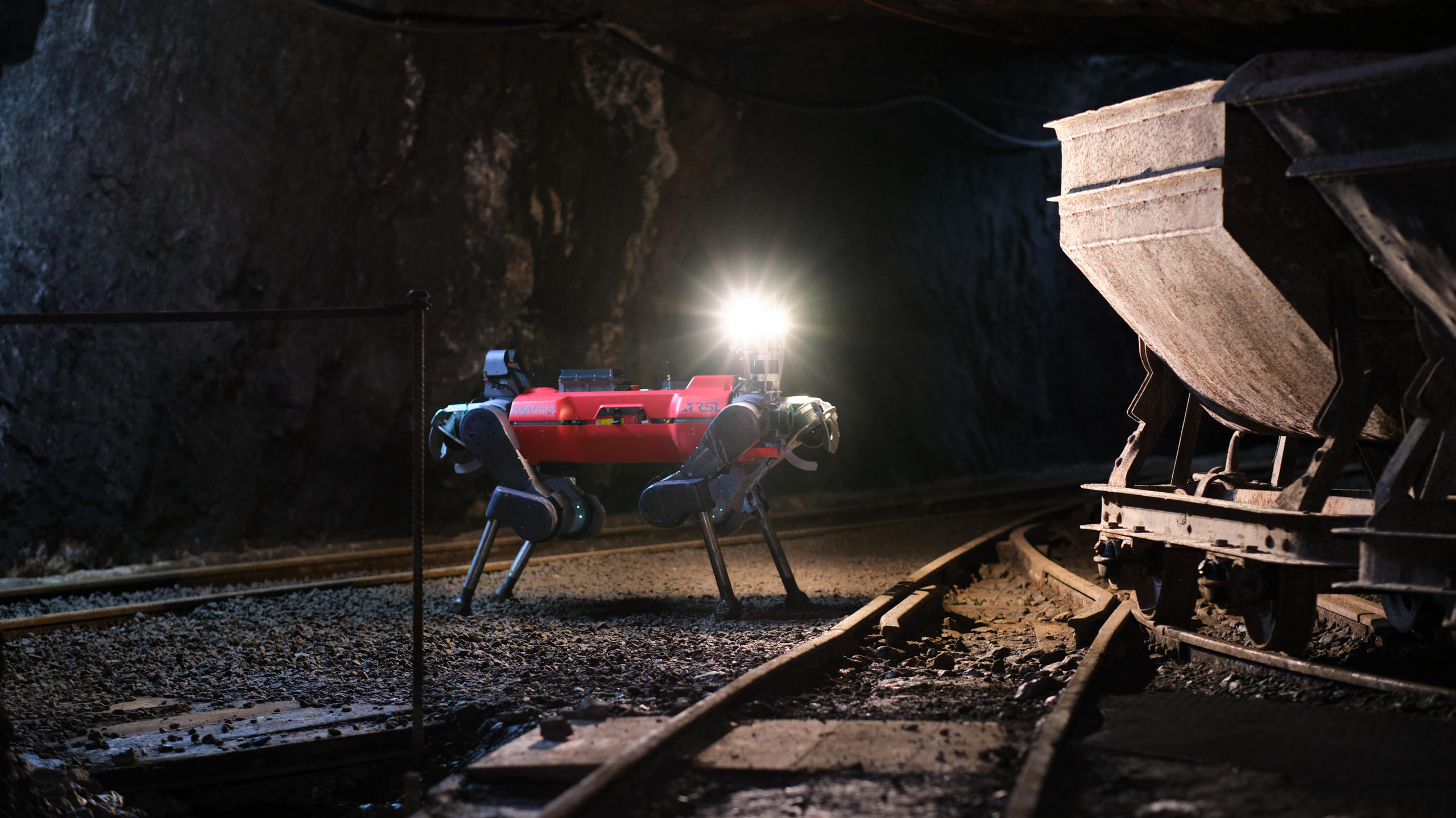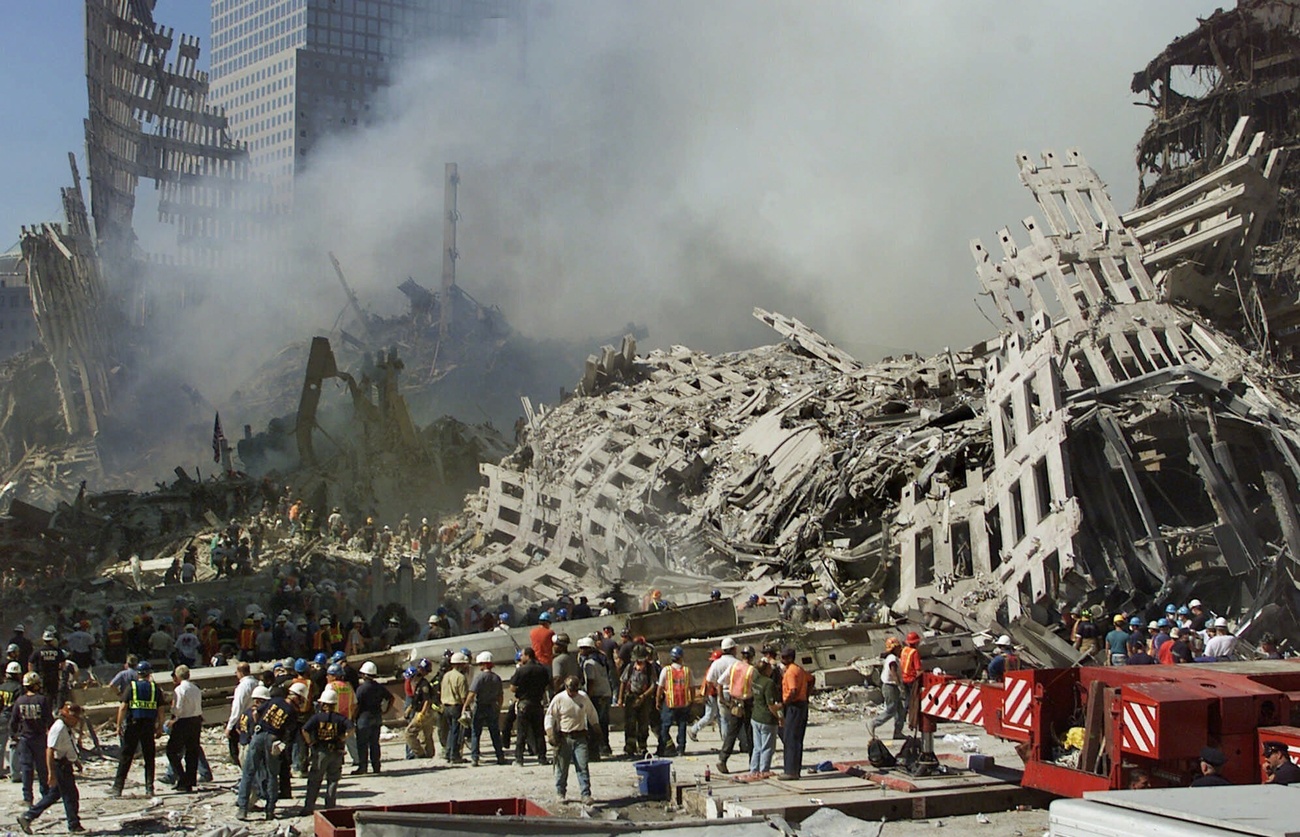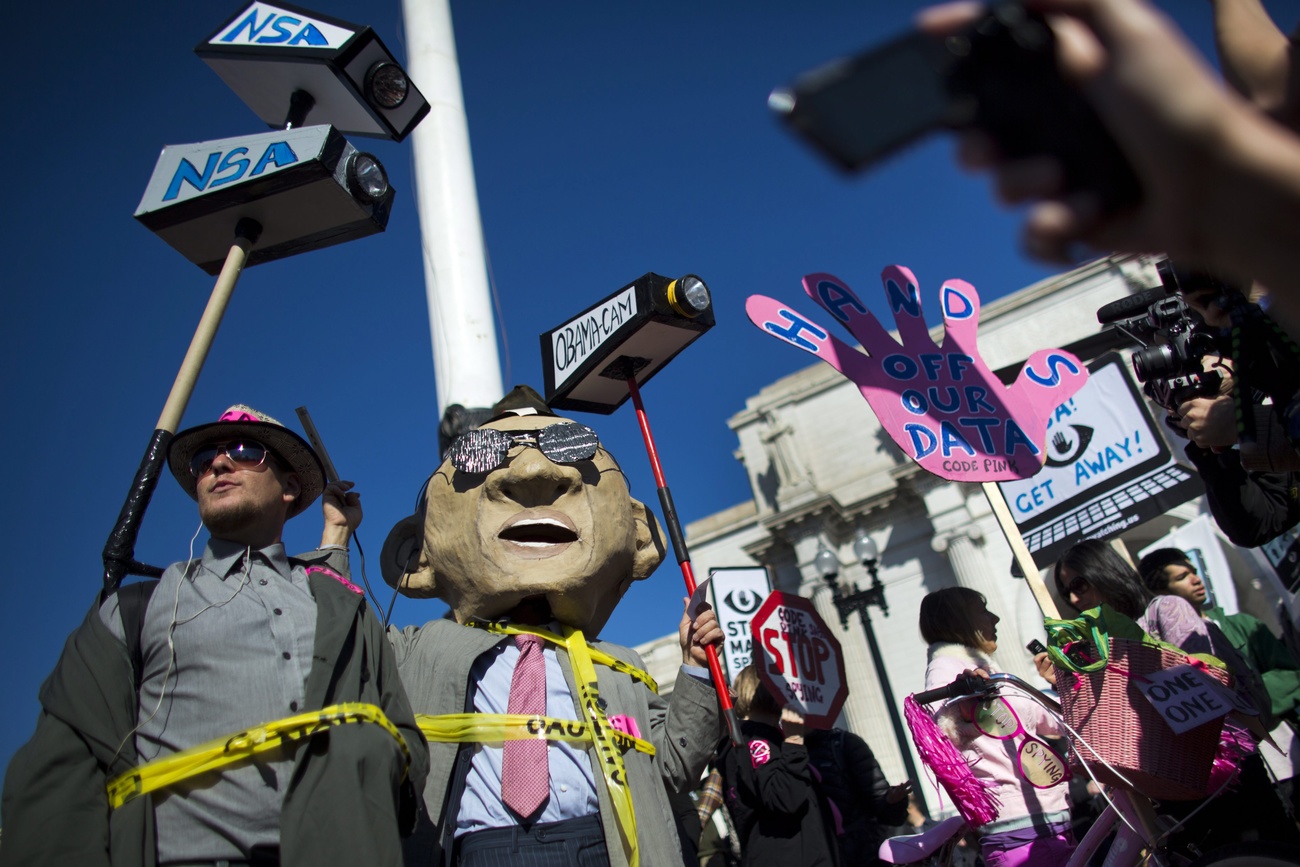‘The world needs technologies that can contain disasters’

The 9/11 terror attacks laid bare the need for better robotic technology to prevent and mitigate disasters, such as robots for search-and-rescue missions. But 20 years later, low market demand and the difficulty of deploying solutions in the field make progress a struggle, says a top Swiss researcher.
Marco HutterExternal link, a professor of robotic systems at the Federal Institute of Technology ETH Zurich, spoke to SWI swissinfo.ch about how Switzerland is nevertheless trying to accelerate the development of robots to work alongside humans in emergency situations.
What impact did the 9/11 attacks have on search-and-rescue robotics, your area of specialty?
I think after 9/11 there was a realisation of how difficult it is to work on search-and-rescue robots, which is probably one of the most difficult and unstructured fields of robotics.
Twenty years ago, when there was the attack on the Twin Towers and the Pentagon, virtually no robotic solution was ready for use. Today, technology has made progress, but there is still a long way to go. You can send drones to perform assessments. But we are still not at the point where we can actually deploy a robot that could go into damaged sites and perform meaningful actions in a short amount of time. It’s going to take a long time to have mature technology for that purpose.

Why does it remain so complicated to do robot search and rescue missions, especially when the need for them is so great amid environmental and other disasters?
At the technological level, mobility is extremely challenging. Today, we can fly drones in open space or have robots operating in well-structured and known environments. To make them operate in collapsed building brings together challenges from mobility, environment understanding, or data communication to name only few. Secondly, it is important that robots can not only look at and observe their surroundings but also interact with them in a useful way. The ability to manipulate, is crucial but also extremely difficult to implement. In addition, every action must be accomplished quickly because in an emergency, time is critical.
These are the main challenges, in addition to the fact that every situation is different and can be unpredictable. It is intuitive for us to make instantaneous decisions in certain circumstances, but for a robot that’s not the case.
What can robots do, in practice, in cases of terrorist attacks like the one on September 11?
There are two types of intervention possible: one concerns the containment of the problem before it happens. From this point of view, technology has undergone a significant evolution in terms of modern security systems in IT. The second intervention occurs in the post-disaster phase, to mitigate the consequences.
Here robotic solutions can help to assess the situation, either by drones that take images from above or also remote-controlled ground robots that are sent into the dangerous area to inspect a bombed-out building or even search for survivors.

Did the September 11 attacks give any visibility to these difficulties and accelerate research on robots in critical situations?
Disasters like 9/11 or Fukushima always tend to accelerate research in areas like robotics at first, but then interest wanes over time. Globally, the Fukushima disaster has, for example, inspired the United States’ DARPA Robotics Challenge programme [which aims to promote technological innovation in human-supervised robotics in disaster management operations].
In Switzerland we’re trying to improve the efficiency and effectiveness of robots in disasters through the “ARCHE” programme, which stands for “Advanced Robotic Capabilities for Hazardous Environments.” This is a multi-annual programme involving about 100 researchers in Switzerland as well as different stakeholder that aims to test and improve the support of robots for disaster mitigation activities.
However, the market for search and rescue robots is not huge, which does not make starting a business very attractive. Hence, we have to find ways to advance the field of robotics as whole and redirect mature technology built e.g. for industrial applications.
How are the solutions tested in practice?
Every summer, in July, we go to an exercise camp in Wangen an der Aare [northwestern Switzerland] for a week, where rescue troops, firefighters and other organizations also train and where we can simulate operations inside collapsed, burned or flooded buildings. In this way, we try to understand what is realistically possible with robots. For example, we simulate mapping an area and search for radioactive sources using tele-operated excavators to remove debris or sending legged robots into a building for a first assessment. The programme, which is co-organized by armasuisse [the Federal Office of Armament], ETH and the Engineer/Rescue/NBC Training Unit, involves male and female students and researchers from all over the world, as well as civilians and military disaster relief organizations. We would like to involve more and more interest groups and first responders in this project to test the technology in a realistic scenario.
There are also similar programmes in Austria and Germany, but the Swiss one is really like an umbrella project that brings together all the research in this area across the whole country.
For those involved in research, these simulations are important for understanding real problems. It’s easy to get lost in theory and then maybe develop solutions that aren’t really useful in practice. Approaching problems helps us identify the underlying questions that need to be answered.
If another attack like 9/11 were to happen, what technology could be used for search-and-rescue purposes?
First and foremost, drones have become a standard tool and would be certainly used for rapid assessment form the air. Moreover, in recent years, we have also seen tremendous progress in the mobility of unmanned ground robots, thanks to the application of robotic legs. I’m referring to animal-like quadrupedal robots that are being deployed in some of the most challenging environments in existence. We’re talking, for example, about mines, sewers, and forests.
With my group at ETH Zurich and the startup ANYbotics, for example, we developed the quadrupedal robot “ANYmal”. Thanks to its four legs, this robot can traverse rough terrains. This is very useful for performing explorations in different or hard-to-reach environments that are dangerous for humans.
Would a robot like ANYmal also facilitate mountain rescues, for example, in the Swiss Alps?
Covering long distances in short time and with little energy is still a challenge for legged systems. We can do multiple kilometers but for large scale search activities in mountains this is probably not sufficient. In such cases, it may be much more helpful to deploy fixed wing drones [which generate lift with their wings and are therefore more efficient] that can support search activities.
Despite these advances, you say there is no market for these robots. Why is that?
The question is, who buys them? Police, fire, and rescue troops are notoriously underfunded, with the exception of some military bodies. Moreover, they can’t afford to buy research prototypes. They need to have robust, working systems, and this creates a huge gap between research and field implementation of the solutions developed. As I mentioned earlier, we have to find ways to commercialize robotic systems for less challenging and better scalable markets before they are accessible as robust and affordable products in search and rescue. Unfortunately, this takes time. This is why progress in this area of robotics is so slow. Yet, in this day and age, the world needs technologies that can contain disasters.

More
What if your future surgeon were a robot?

In compliance with the JTI standards
More: SWI swissinfo.ch certified by the Journalism Trust Initiative










Join the conversation!